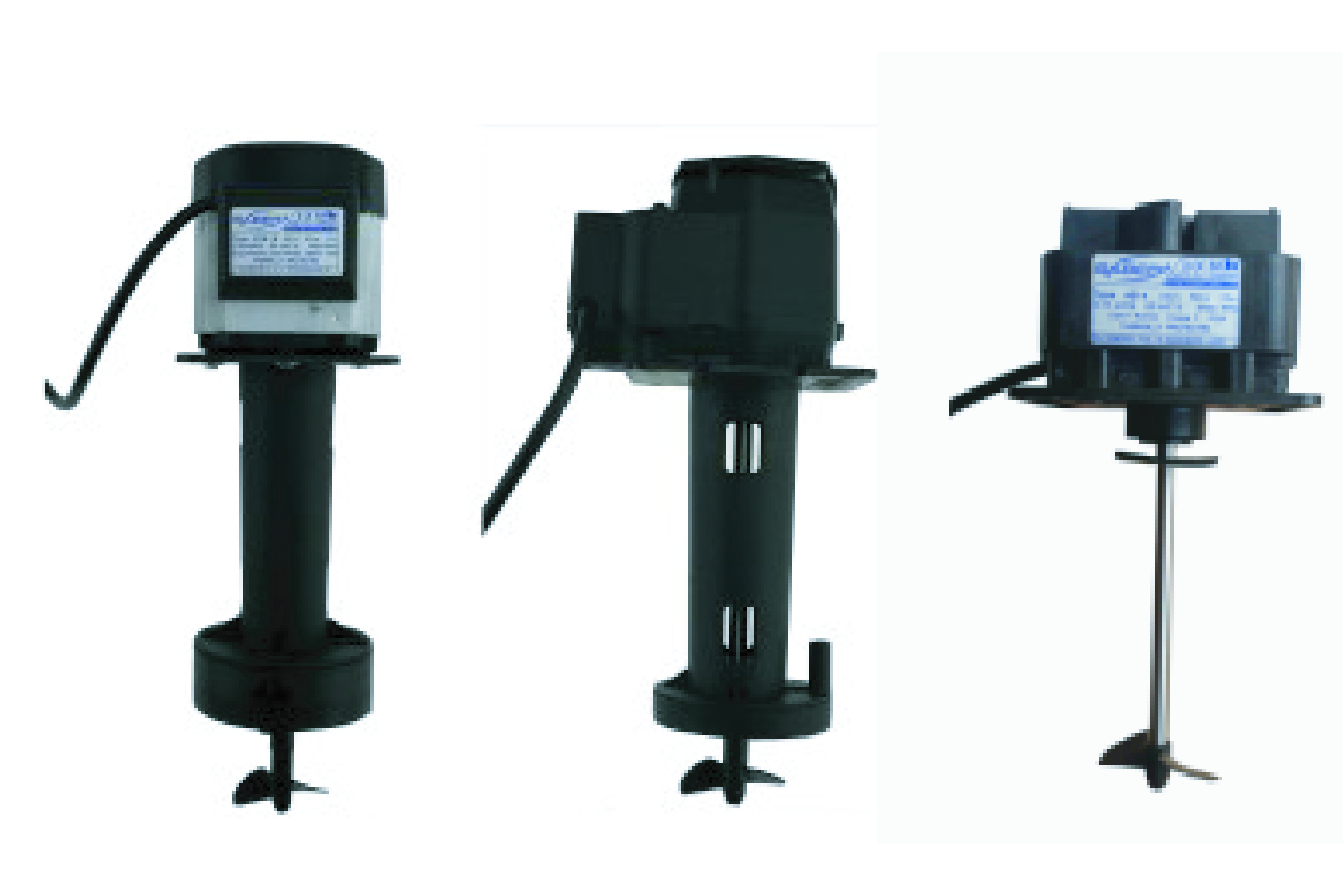- Dispensing systems
- Cooling
- Cleaning
- Bar accessories
- Repair | Maintenance Beer cooling
- Offers
- Blog
Filters
How does a keg barrel work?
The keg connection: How to find the right keg tap head
The keg was introduced in the UK back in 1964 and is now standard for draught beer in the catering trade in many countries. In the meantime, the keg is also becoming increasingly common in the private sector in conjunction with high-quality tapping systems. Common sizes for kegs are 30 and 50 litres.
Information about KEG kegs:
You can also find interesting facts about keg dispense heads in our popular BLOG article about dispense heads
- Here you can download the list of all breweries in pdf format: Brewery KEG list
KEG tap head KEG closure
Our KEG dispensing heads and KEG closures provide a secure and efficient connection between the keg and the dispensing system. Ideal for beer, soft drinks and more - robust, durable and easy to handle. Perfect for catering and private applications!
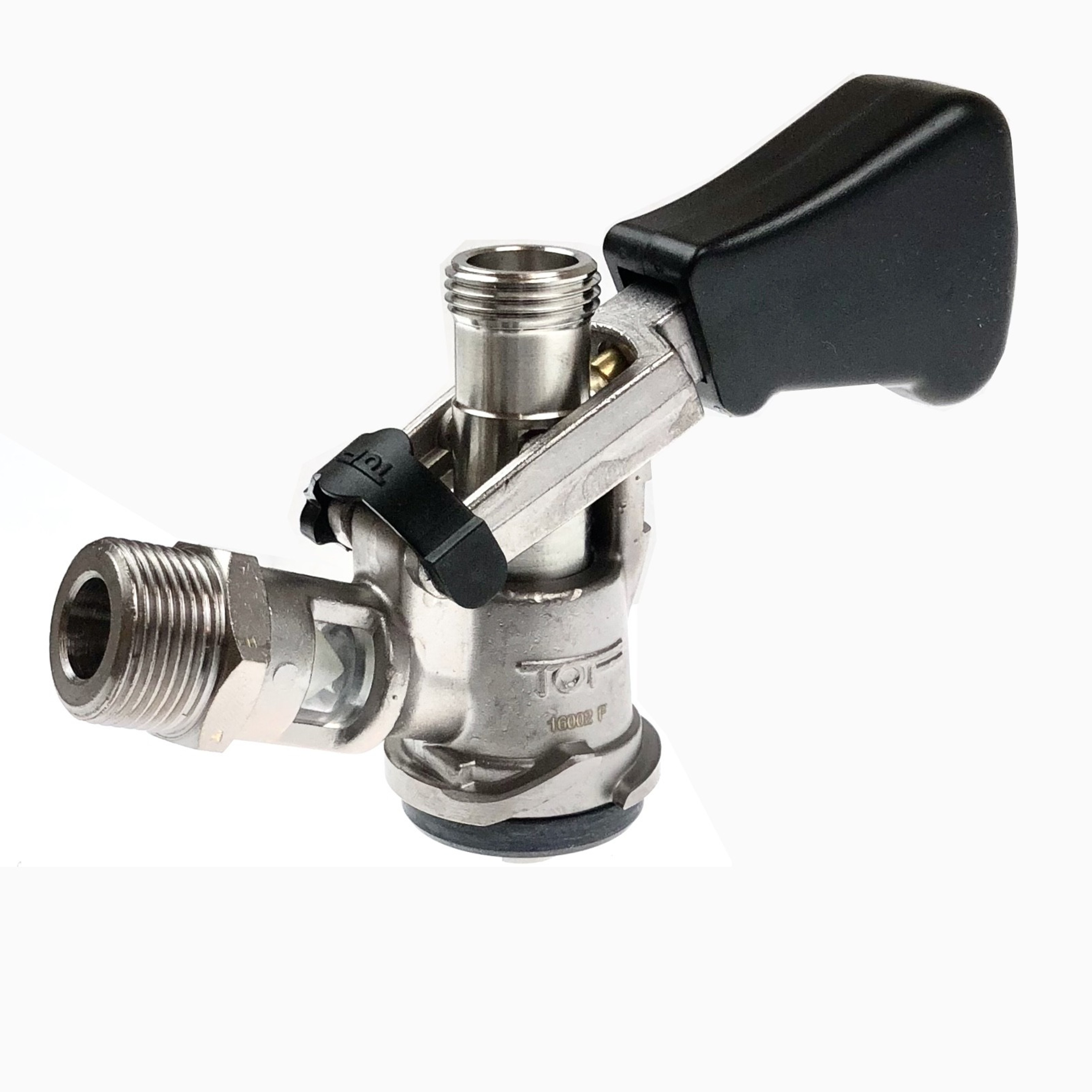
Basket dispensing head, KEG dispensing head, KEG closure type S
Basket dispensing head, KEG dispensing head, KEG closure with beverage catcher, stainless steel plunger Beverage connection R 5/8" Pressurised gas connection R 3/4" Non-return device basket tap head for cellar tapping for bar tapping (side outlet) low height A list of which KEG tap head belongs to which beer brand (brewery) can be found HERE You can find the corresponding beer screw connections HERE
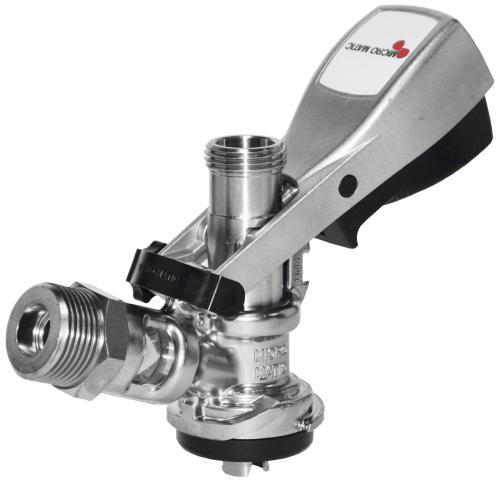
Basket tap head Micro Matic keg closure type S
Basket tap head Micro Matic keg closure type S with beverage catcher, stainless steel plunger Beverage connection R 5/8" Pressurised gas connection R 3/4" Non-return device basket tap head for cellar tapping for bar tapping (side outlet) low height A list of which KEG tap head belongs to which beer brand (brewery) can be found in our KEG tap head list For corresponding beer screw connections, please click on Beer screw connection
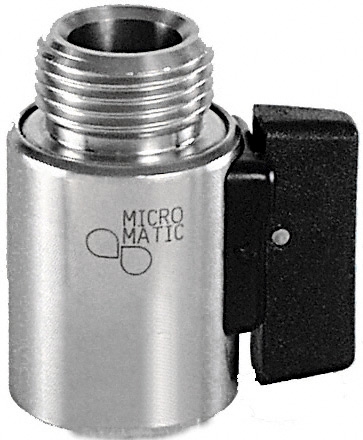
Beer stopcock for tap head keg on beer dispenser 5/8 inch Beer shut-off valve
Beer stopcock for keg tap head on beer dispenser 5/8 inch Beer shut-off valve Beer stopcock for keg tap head small, 5/8 inch internal thread to 5/8 inch external thread. Small design for screwing onto the keg / tap headNo more beer backflow when changing kegs. Also suitable for the Köpi tap head.
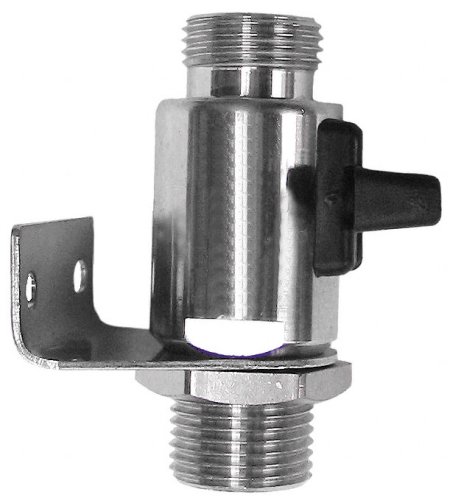
Beer stopcock with stainless steel wall bracket
Beer stopcock with stainless steel wall bracket Micro Matic beer stopcock for wall mounting made of stainless steel in brewery quality. made of chromium-nickel steel, recessed on both sides 14 x 8 mm, with grease-free ball beer stopcock and bracket made of CNS. available design: NW 7 mm NW 10 mm
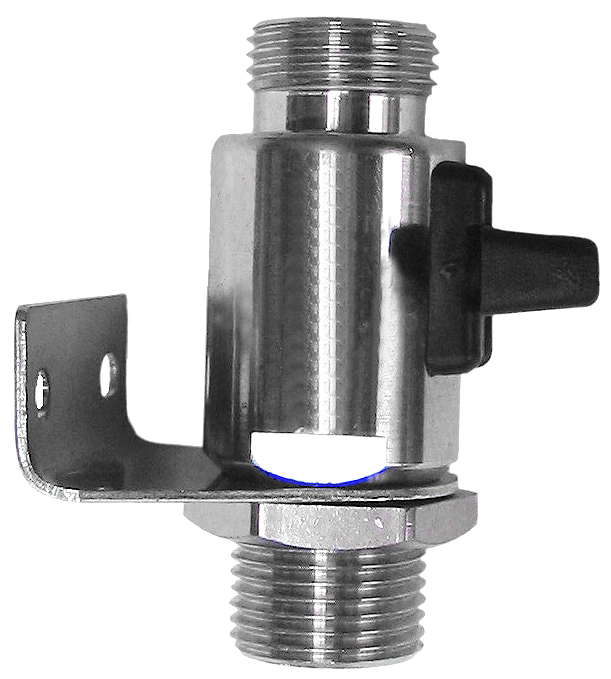
Beer stopcock with wall bracket
Beer stopcock with wall bracket Stainless steel beer stopcock with wall bracket, grease-free stopcock. Threaded on both sides 5/8", complete with 2 hose fittings (spout, nut, seal). available version: NW 7 mm NW 10 mm
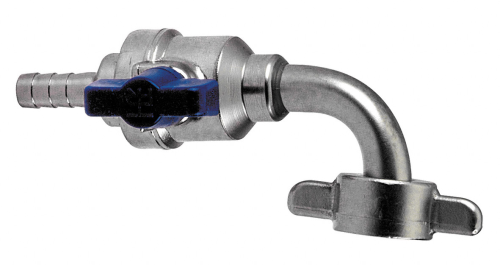
Bent beer tap with screw connection
Bent beer tap with screw connection Beer stopcock, bent, made of stainless steel with screw connection for screwing on to KEG tapping heads or piercing spout, with fixed spout. Design: NW 7 mm bent, NW 10 mm bent
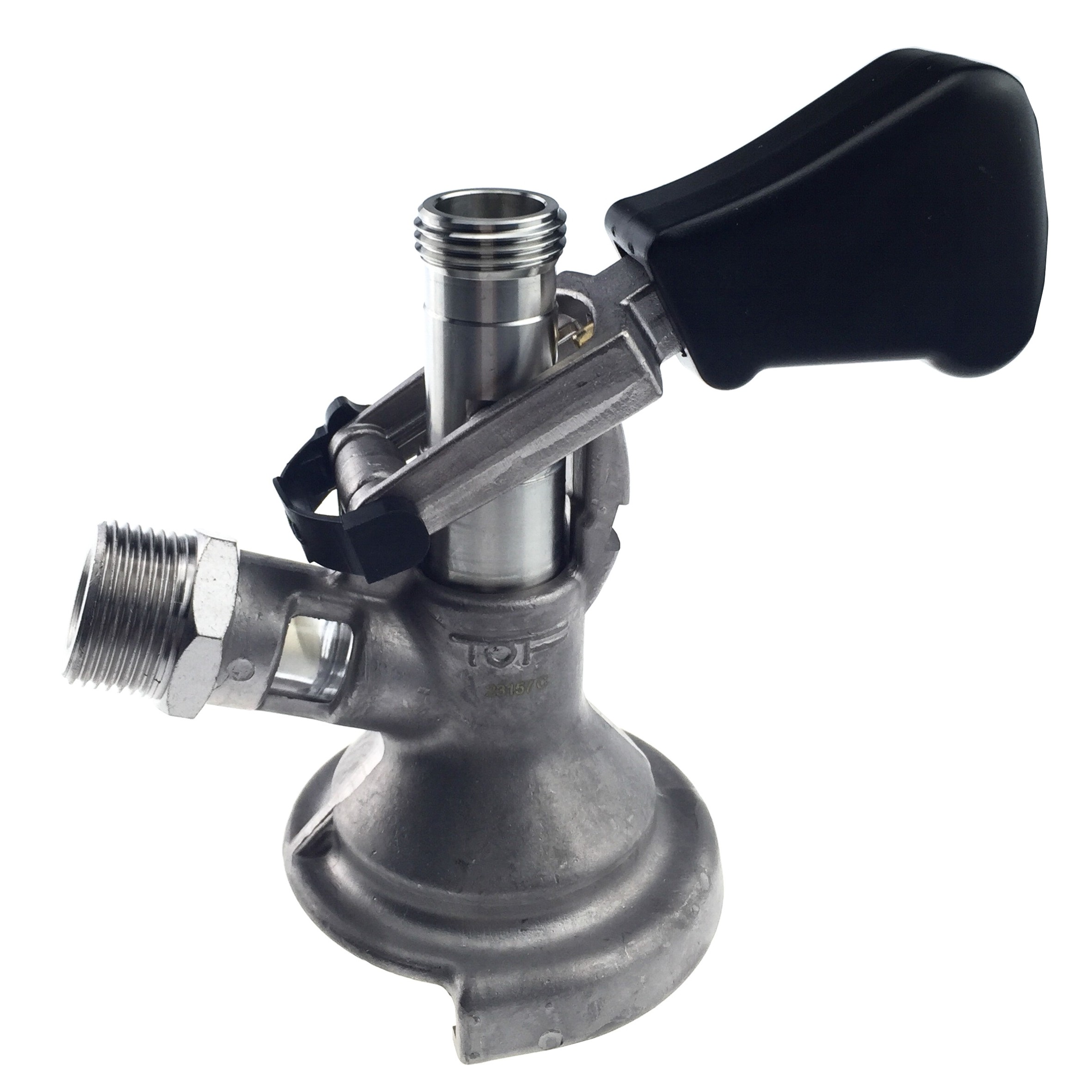
Combi dispensing head KEG dispensing head
Combi keg dispense head KEG dispense head The Kombi Keg Dispensing Head is NOT AN unsiversal tap head that fits all beer kegs. with beverage catcher, stainless steel plunger Beverage connection R 5/8" Pressurised gas connection R 3/4" Non-return device Combi tap head for cellar tapping for bar tapping (side outlet) low height A list of which KEG tap head belongs to which beer brand (brewery) can be found here Brewery KEG list You can find the corresponding beer screw fittings in the fastening material section
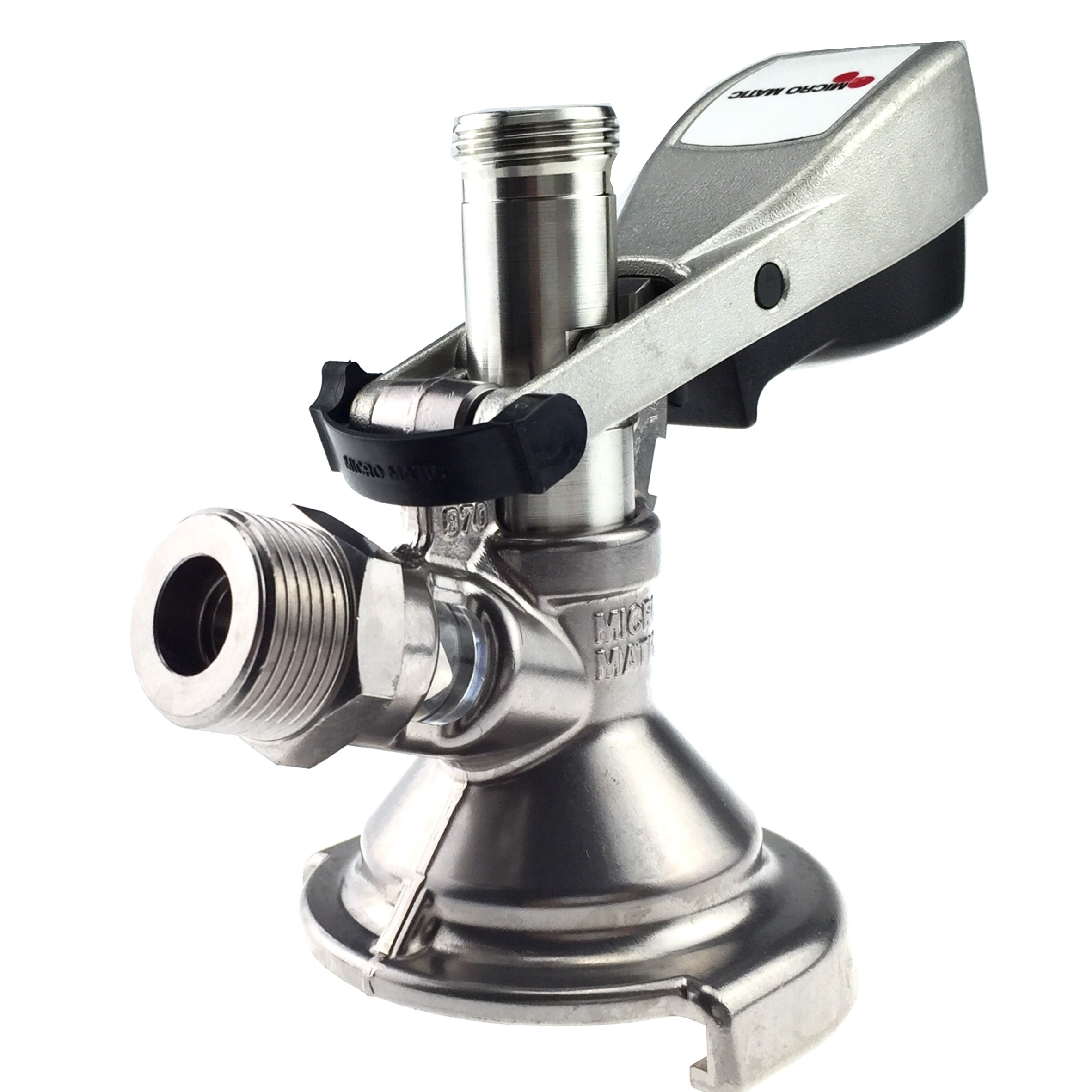
Combination tap head Micro Matic Keg closure
Combination tap head Micro Matic keg closure with beverage catcher, stainless steel plunger Beverage connection R 5/8" Pressurised gas connection R 3/4" Non-return device Combi tap head for cellar tapping for bar tapping (outlet on the side) low overall height ATTENTION: Please note that the Kmobi KEG tap head is not a universal tap head. A list of which KEG tap head belongs to which beer brand (brewery) can be found in our KEG tap head list For corresponding beer screw connections please click on Beer screw connection
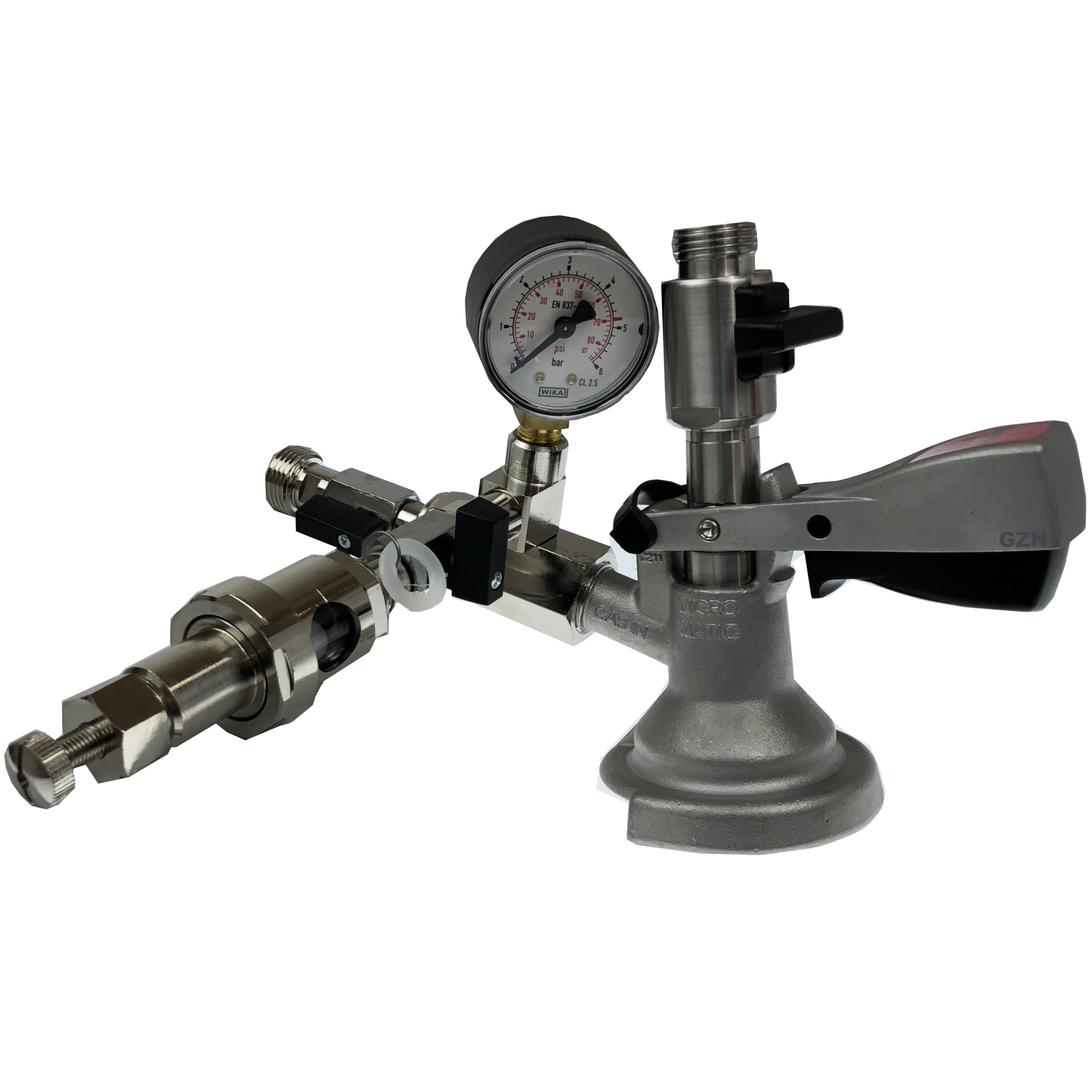
Fill beer keg yourself
Filling tap head for filling beer kegs yourself KEG tap head for filling beer kegs with KEG connection. Firstly, the keg is pressurised with carbon dioxide via the stopcock. To do this, close the stopcock. The desired keg pressure, e.g. 1 bar, can be set using the adjusting screw. If this set pressure in the keg is exceeded, the valve blows off the excess pressure. Once the correct pressure has been reached, the tap is closed and the CO2 line is unscrewed. The beer line is screwed on. Open both taps for filling. The keg is filled. If the keg pressure increases, the valve automatically blows off (as described above). If beer comes out of the tap, the keg is full. Close all 2 taps and remove the tap head from the keg. Available versions: Flat filling tap head Combination tap head Basket tap head
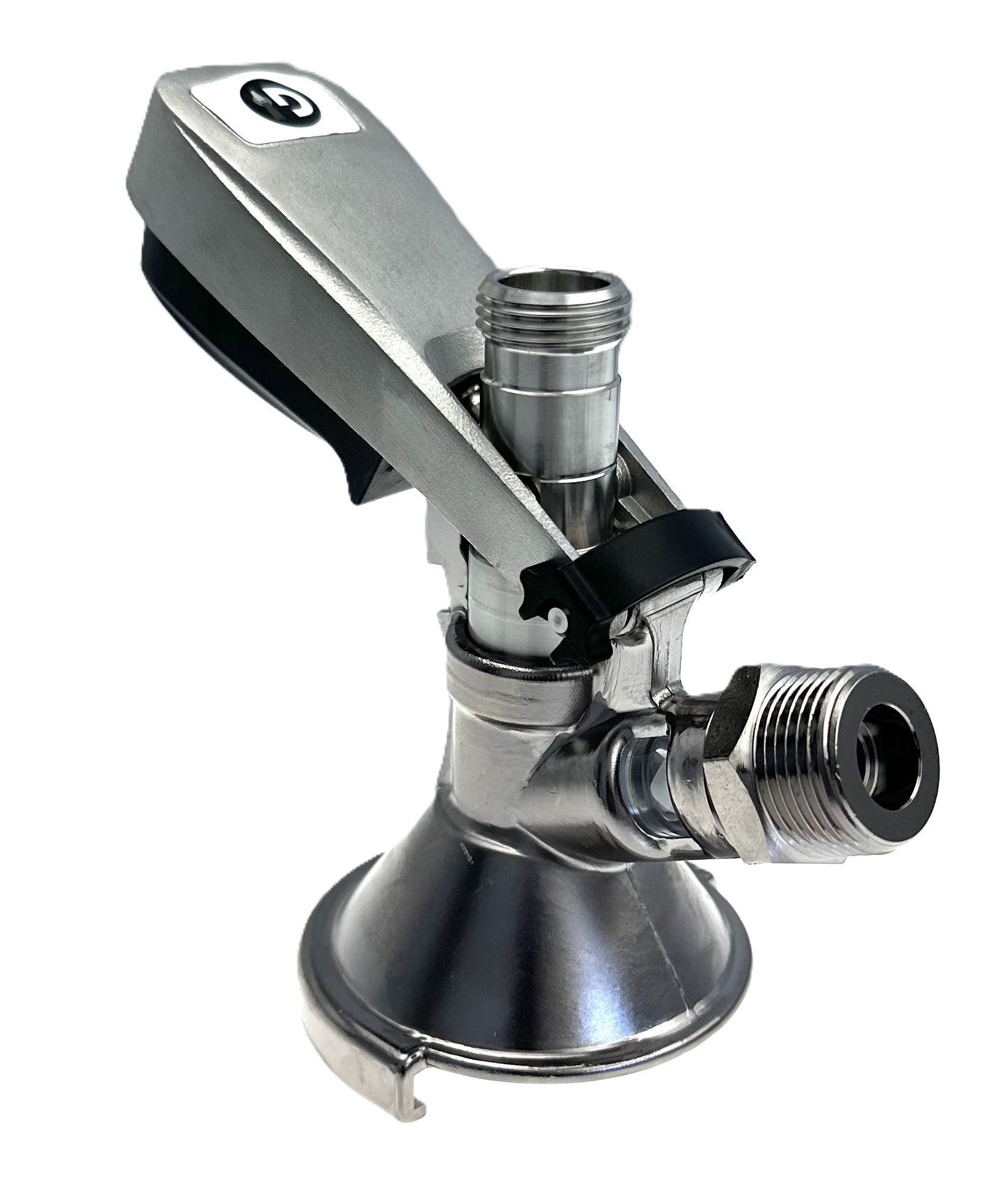
Average rating of 5 out of 5 stars
Flat keg dispense head
Flat keg tapping head for beer keg with beverage catcher, stainless steel plunger Beverage connection R 5/8" Pressurised gas connection R 3/4" Non-return device flat keg tap head for cellar tapping for bar tapping (side outlet) low height A list of which KEG tap head belongs to which beer brand (brewery) can be found HERE You can find the corresponding beer screw connections HERE
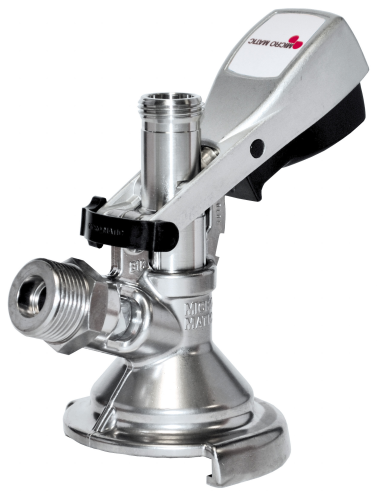
Flat KEG dispensing head Micro Matic Keg closure
Flat KEG tap head Micro Matic keg closure with beverage catcher, stainless steel plunger Beverage connection R 5/8" Pressurised gas connection R 3/4" Non-return device Flat tap head for cellar tapping for bar tapping (side outlet) low height, tapped 115 mm high A list of which KEG tap head belongs to which beer brand (brewery) can be found in our KEG tap head list For corresponding beer screw connections, please click on Beer screw connection
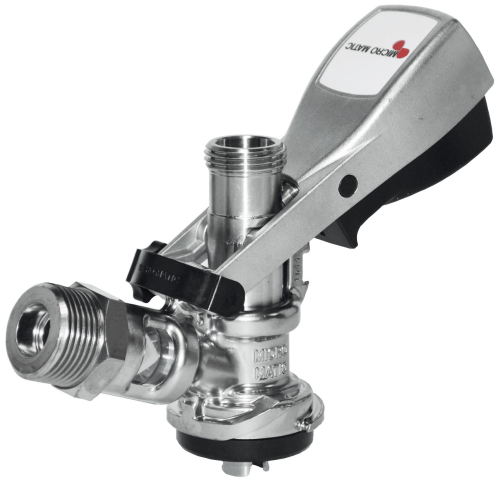
Micro Matic dispensing head keg for draught beer Keg head keg closure dispensing system
Micro Matic tap head keg for draught beer Beer keg keg head Keg closure Dispensing system As not all beer kegs have the same connection, it is important to use the right keg head. There are 4 keg systems: Flat system Combi system Basket system Draft system
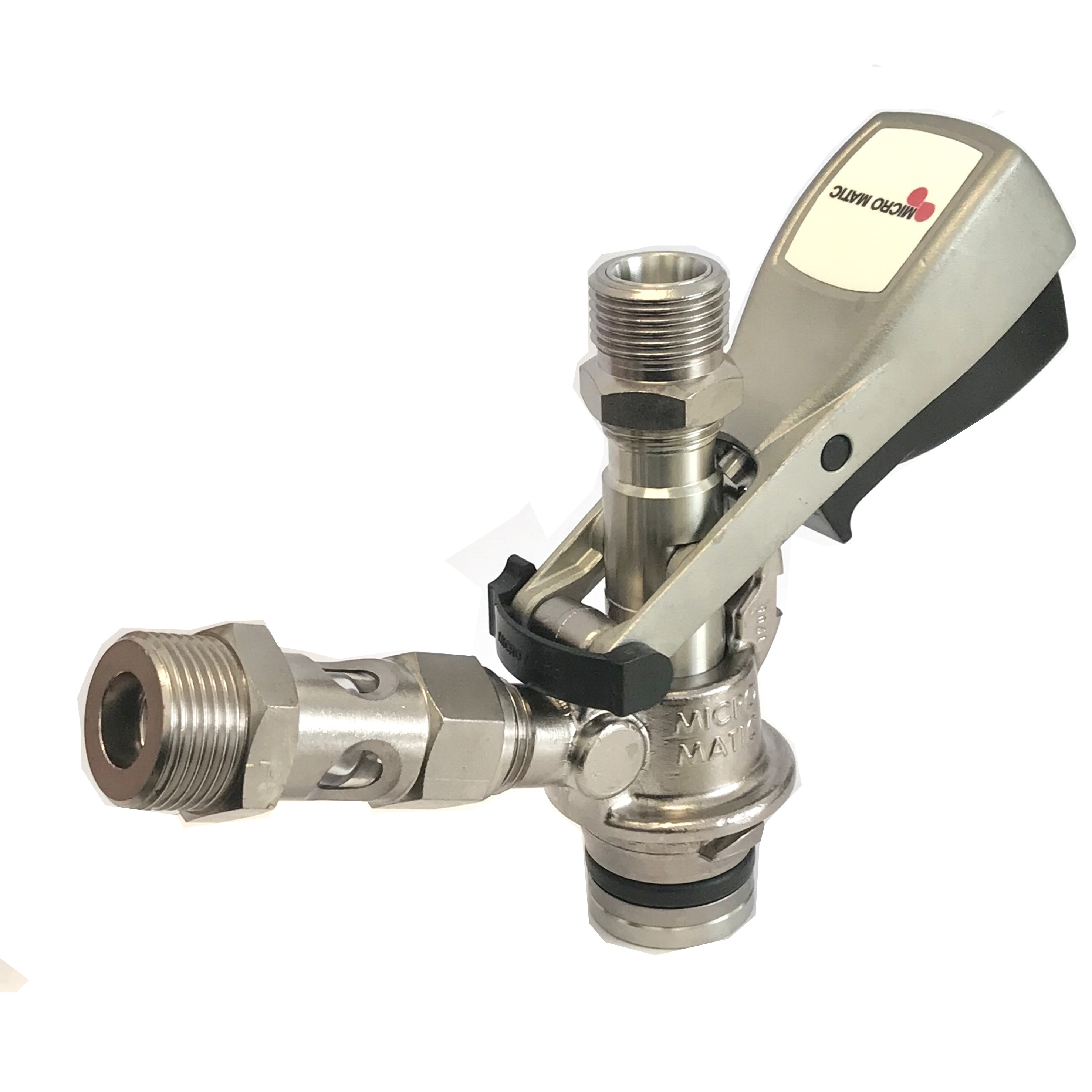
Guinness keg tap head for Guinness beer keg closure
Guinness keg tap head for Guinness beer keg closure Manufacturer Micro Matic with beverage catcher, stainless steel plunger Beverage connection R 5/8" Pressurised gas connection R 3/4" Non-return valve for cellar tapping A list of which KEG dispensing head belongs to which beer brand (brewery) can be found in our KEG tap head list For corresponding beer screw connections please click on Beer screw connection
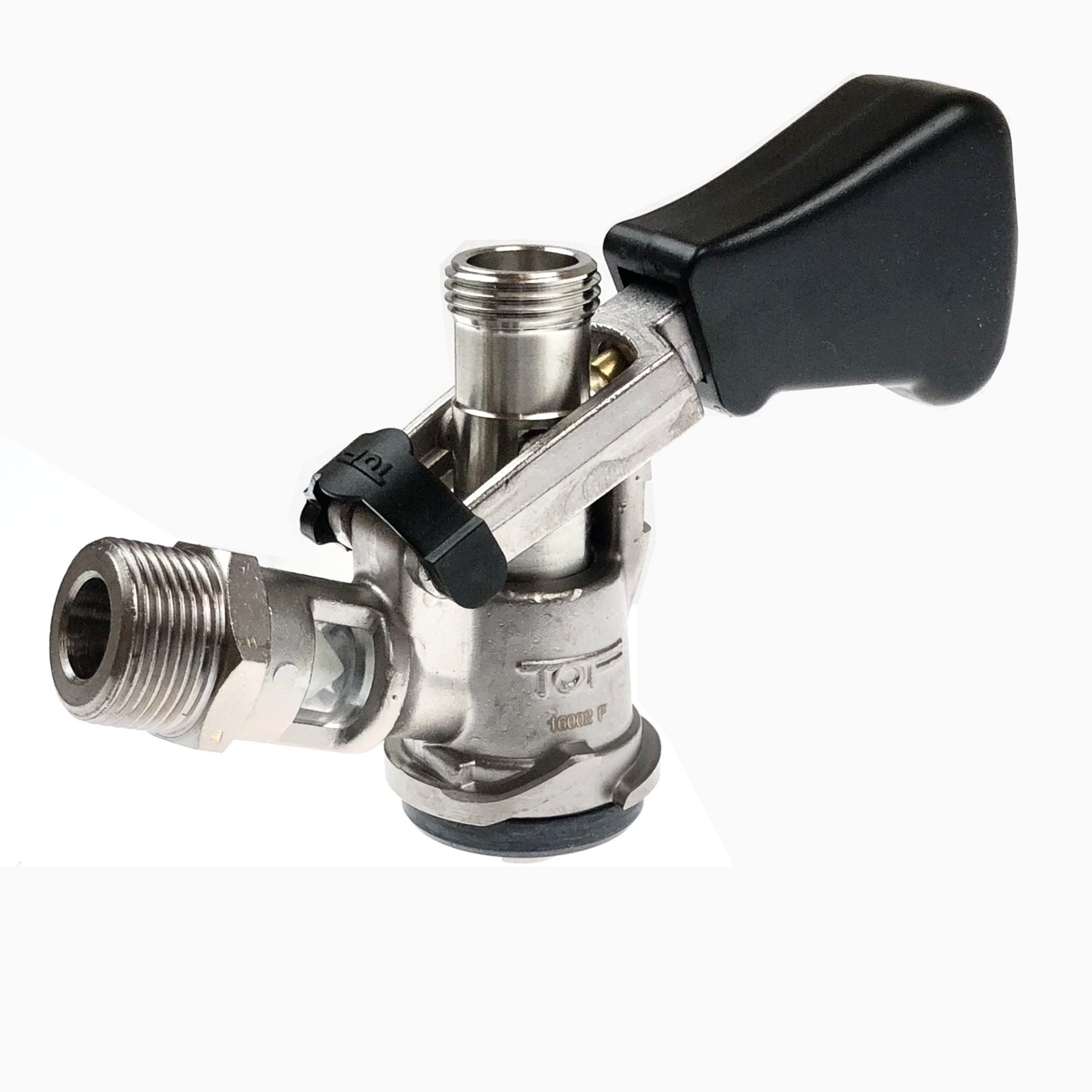
Köpi tap head KEG tap head Draft
Köpi tap head KEG tap head Draft with beverage catcher, stainless steel plunger Beverage connection R 5/8" Pressurised gas connection R 3/4" Non-return device Köpi tap head for cellar tapping for bar tapping (side outlet) low height A list of which KEG tap head belongs to which beer brand (brewery) can be found HERE You can find the corresponding beer screw connections HERE
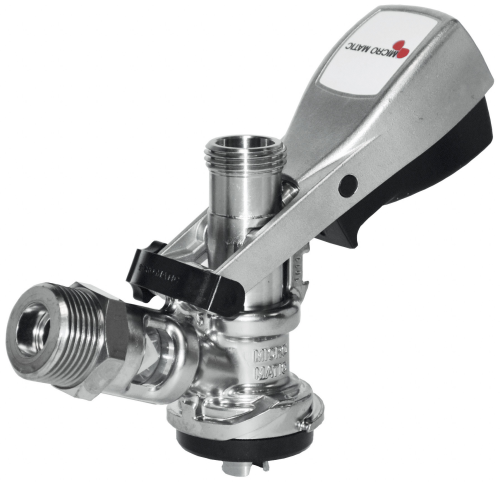
KÖPI tap head Micro Matic keg closure
König Pilsener tap head Micro Matic keg closure with beverage catcher, stainless steel plunger Beverage connection R 5/8" Pressurised gas connection R 3/4" Non-return valve König Pilsener tap head for cellar tapping for bar tapping (side outlet) low height A list of which KEG dispensing head belongs to which beer brand (brewery) can be found HERE ATTENTION: for this tap head you need a beer stopcock, see accessories above!!!
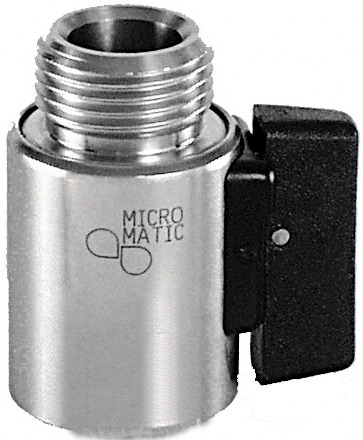
Micro Matic beer stopcock CNS
Micro Matic beer stopcock CNS Beer stopcock CNS small, 5/8" female thread, 5/8" male thread, small design, for screwing onto KEG tap head
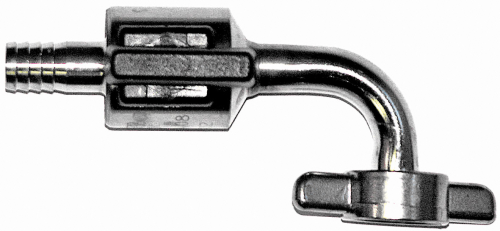
Micro Matic beer tap, curved, stainless steel
Beer stopcock bent made of stainless steel for screwing onto KEG tapping heads or tap spouts, with fixed spout. Beer tap, bent NW 7 mm bent NW 10 mm bent
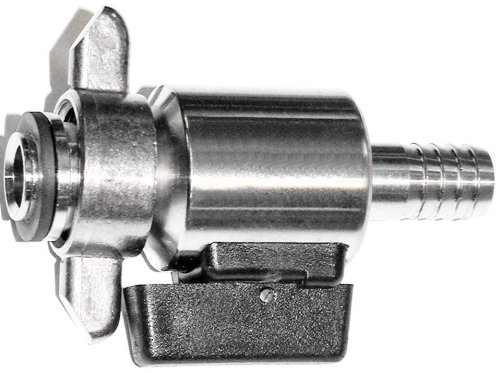
Micro Matic beer tap, straight, stainless steel
Beer stopcock straight made of stainless steel for screwing onto KEG tapping heads or with fixed spout. Beer stopcock, straight NW 7 mm straight NW 10 mm straight
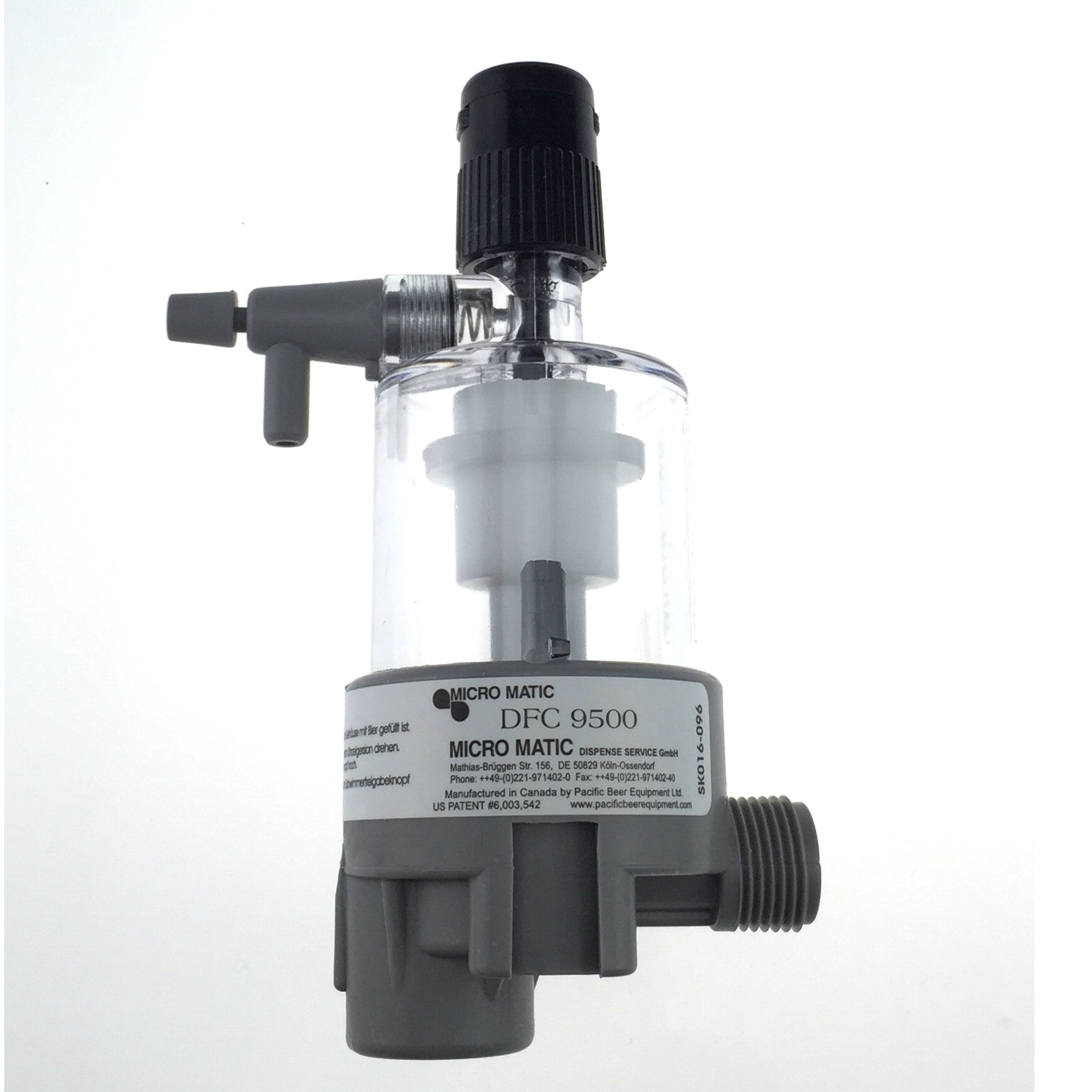
Micro Matic foam control fitting DFC 9500
Micro Matic foam control fitting DFC 9500 Automatic foam control with the Micro Matic foam control fitting DFC 9500. The foam control fitting automatically recognises when the beer keg is empty and prevents beer foam from entering the beer line. Switches off the flow of the beer line as soon as the beer keg is empty, no loss due to empty beer lines, beer immediately restored after keg change. The devices guarantee that the beverage line remains filled with beer. Foam in the beer line? Buy DFC 9500 foam control valve now Foam control fitting simply to screw onto KEG or wall bracket. Available versions: Foam control fitting for screwing onto KEG for DFC 9500 Wall bracket for DFC 9500 Foam control fitting for wall mounting M. 2 x 5/8“ AG
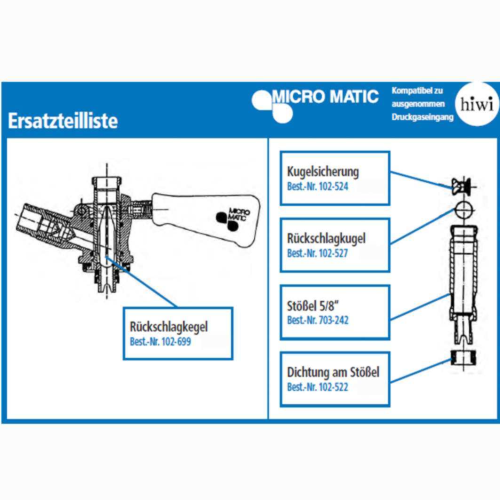
Spare part for basket tapping head Micro Matic / HIWI
Spare parts for basket tapping head Micro Matic / Hiwi Non-return cone Ball lock Non-return ball Plunger Hexagon nut 3/4“ with recess 14 x 7 mm Lip valve Sight glass for non-return device O-ring for 5/8“ plunger Main seal Handle with logo Pin for Dispensing head handle Seal on Plunger
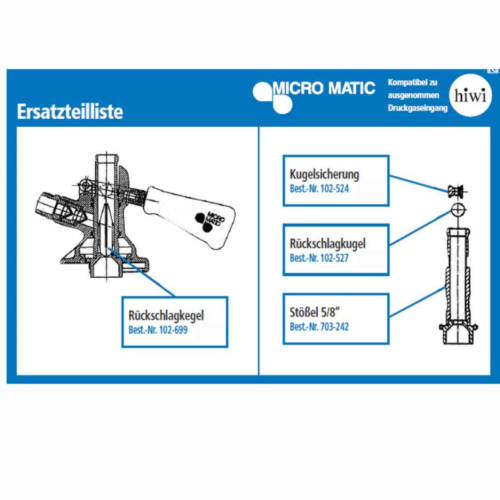
Spare part for flat tapping head Micro Matic / HIWI
Spare parts for flat tapping head Micro Matic / Hiwi Non-return cone Ball lock Non-return ball Plunger Hexagon nut 3/4“ with recess 14 x 7 mm Lip valve Sight glass for non-return device O-ring for 5/8“ plunger Main seal Handle with logo Pin for dispensing head handle
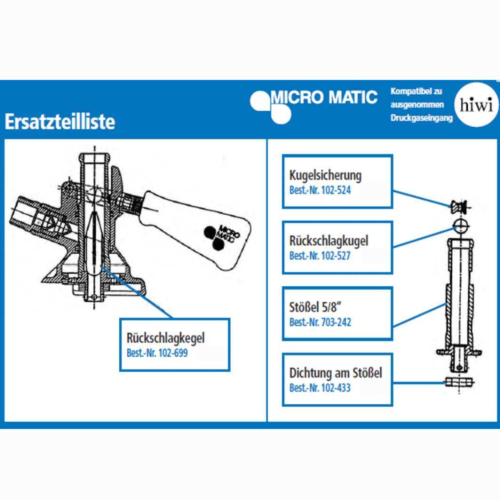
Spare part for Micro Matic / HIWI combi tapping head
Spare parts for Micro Matic / Hiwi combi tapping head Non-return cone Ball lock Non-return ball Plunger Hexagon nut 3/4“ with recess 14 x 7 mm Lip valve Sight glass for non-return device O-ring for 5/8“ plunger Main seal Handle with logo Pin for Dispensing head handle Seal on Plunger
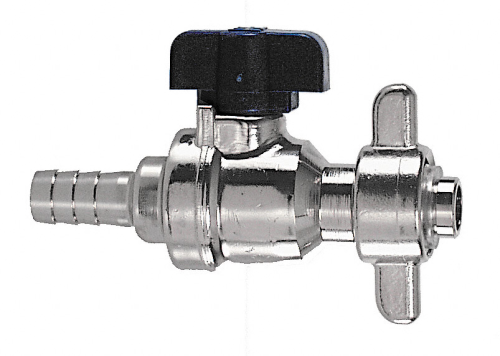
Straight beer tap
Beer stopcock straight for screwing on to KEG tapping heads or tap, with fixed spout. Beer stopcock NW 7 mm straight, only available in stainless steel NW 10 mm straight
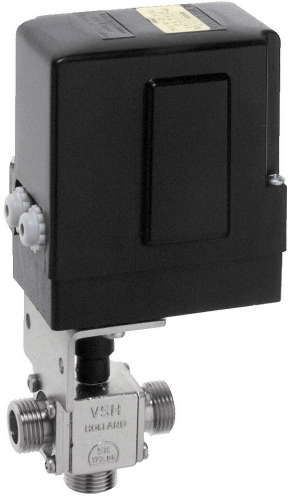
Three-way ball valve NW 10 mm electric
Three-way ball valve NW 10 mm electrical, with 3 x 5/8" connection thread, with SK mark. Wall bracket with motor, with switch for remote switching. with Push-button switch Push-button switch individually Attention! Transformer 24 Volt, 50 Hz must be provided by the customer and connected in between.

